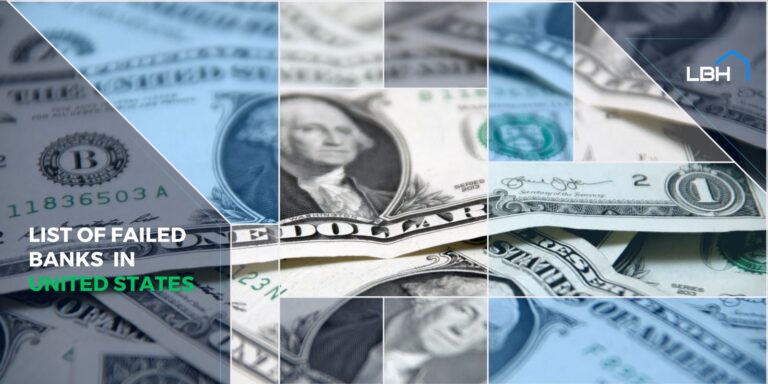The current high inflation rates have left many homeowners feeling the pinch of their mortgage payments. The rising interest rates are also affecting borrowers with floating mortgages. Others are looking to leverage their home equity. In light of these changes, many homeowners are considering refinancing to lower their monthly payments.
This article will inform you on the mechanics of home refinancing. It will explore reasons and how often you can refinance your home. You’ll also gain insights into its seasoning requirements, key considerations, costs, and when and how to refinance your home.
What Is a Mortgage Refinance?
A mortgage refinance or refinancing is trading your old mortgage for a new one, often with better terms. You use the new loan to pay off the old one and start making payments on the new loan.
The new terms could include lower interest rates, a shorter loan period, or a different type of mortgage. For instance, you can switch from a fixed-rate mortgage to a floating one or vice versa.
Image Source
Why Do People Refinance Their Homes?
Below are some of the most common benefits of refinancing:
To Get a Lower Interest Rate/Lower Monthly Mortgage Payment
If interest rates dropped since you got your original mortgage, you can refinance to take advantage of the lower rates. However, this is less likely to apply in today’s market due to high mortgage rates. Another scenario is where your credit score has improved significantly. A higher credit score qualifies you for better rates.
To Shorten the Loan’s Term
If your financial situation has improved since taking out the original loan, refinancing to a shorter term can help you pay your mortgage faster without prepayment penalties. A shorter loan term means less interest, although your monthly mortgage payments will be higher.
To Get a Different Kind of Loan/Eliminate Private Mortgage Insurance
If interest rates dropped since you got your original mortgage, you can refinance to take advantage of the lower rates. However, this is less likely to apply in today’s market due to high mortgage rates. Another scenario is where your credit score has improved significantly. A higher credit score qualifies you for better rates.
Cash Out Home Equity With a Cash Out Refinance
If you have been paying your mortgage for a while, you might have built up considerable equity in your home. You can use this equity to get a larger loan than you owe on the current mortgage. You can use the difference to fund other projects, such as home improvements.
Image Source
To Consolidate Debt
If you have several high-interest debts, rolling them into one mortgage might be more cost-effective. Mortgages normally boast lower interest rates than personal loans. This means you will end up paying less in interest.
How Often Can You Refinance Your Home?
There’s no law on the maximum number of times you can refinance your mortgage. But mortgage lenders have refinancing qualifications you must pass each time you apply for a refinance.
For example, refinance for a conventional loan requires a credit score of at least 620 and a maximum debt-to-income ratio of 50%. The lender will also ask for income verification and an appraisal of your home.
The lender will have unique rules for a cash-out refinance. If you have taken out a cash-out refinance before, you will likely have less equity than you think. This is because every time you tap into your home equity, you reduce the percentage of equity you can use to secure a loan.
Seasoning Requirements
Seasoning requirements are rules on the length of time you must hold your current mortgage before you can refinance. This period usually ranges from six to 12 months but can vary depending on several factors.
The refinance you are applying for and how long you’ve been paying your current mortgage can affect seasoning requirements. For a cash-out refinance, seasoning requirements are at least six months. If your reason for refinancing is to get rid of mortgage insurance, you’ll need to have had your existing mortgage for at least two years.
If you are refinancing a conventional loan, you may be allowed to do so without a seasoning period. If your original mortgage was a government-backed program, you will wait six to 12 months before qualifying for refinancing.
Consult your home lending advisor for more detailed information on seasoning requirements for your specific situation.
Factors to Consider When Refinancing
When refinancing, there are several key factors to consider, including the following:
Interest Rates
Interest rates affect your monthly payment. A lower interest rate means a lower monthly payment, making your mortgage more affordable. But if rates have risen since you first took out your mortgage, refinancing may increase your payments.
Image Source
Closing Costs
Closing costs are fees the lender charges you to process your refinance application. These fees may include appraisal, origination, title insurance, and credit check, among other charges. In most cases, closing costs are rolled into your new loan, increasing the loan amount.
Financial Situation Assessment
Evaluate your current income and financial stability, monthly expenses, debt, and savings. Refinancing may be a good option if your finances are stable and you can afford refinancing costs.
Refinancing Goals
Your goal for refinancing will determine the type of refinancing that’s best for you. For instance, a rate-and-term refinance might be the best option if you’re looking to lower your monthly mortgage payments.
Cost of Refinancing Multiple Times
Refinancing a mortgage multiple times might seem like a smart decision if interest rates keep dropping. But a mortgage refinance comes with costs that can eclipse the savings.
Each time you refinance, you will incur closing costs ranging from 2-5% of your loan amount. Adding up these costs over multiple refinances can result in a substantial sum.
Image Source
Calculating the Cost of Additional Refinances
Start by determining all the closing costs your lender is charging you. You can feed these figures into an online refinance calculator to see how much you can save or lose by refinancing.
It’s also essential to consider the break-even point. This is when you will recover the cost of refinancing through lower monthly payments.
Refinancing may make financial sense if you plan to stay in your home for a long time after refinancing. Otherwise, you might not save enough to make a refinance worth it.
Considerations Before Refinancing Again
Before jumping into another round of refinancing, consider these key points:
The Financial Implications
As mentioned, with each refinance, you will need to pay closing costs, which consume your savings over time. Eventually, this can add to your loan amount rather than decrease it. A larger loan amount can also translate to an extended loan term, delaying outright home ownership.
Associated Risks
Besides financial implications, multiple refinances can also come with other risks. For example, if you refinance from a fixed-rate mortgage to an adjustable-rate mortgage, you expose yourself to potential interest rate increases. Alternatively, refinancing to an adjustable-rate mortgage means you risk missing out on savings should the rates drop.
Additionally, refinancing multiple times can affect your credit score. Every time you apply for credit, it will include a hard inquiry on your credit report. This inquiry can lower your score by around five points, according to credit-scoring company FICO.
Another associated risk is a reduction in home equity if the refinances are the cash-out type. Less equity means less ownership in your home.
How Can Borrowers Decide If Refinancing Again Is Right for Them?
A good rule of thumb is to consider refinancing again if you can lower your interest rate by at least 0.75%. A 0.50% reduction may also suffice. This will help offset the refinancing costs and still enable you to save.
Image Source
Tips for Refinancing Your Home
When contemplating refinancing your home, it’s essential to approach the process strategically. Here are a few pointers to guide you on your refinancing journey.
How Can Borrowers Shop Around for the Best Rates?
You can shop around for refinancing options by contacting several lenders, including credit unions, banks, and online lenders, and comparing their rates and terms. You can also utilize online tools. These tools allow you to gather and compare rates from various lenders quickly.
What Are the Benefits of Getting Pre-Approved for a Mortgage Before Refinancing?
Getting pre-approved for a mortgage before refinancing can help you understand your borrowing power. This enables you to budget more accurately.
Additionally, a pre-approval letter shows lenders you’re less risky. This can help you negotiate for lower rates and favorable terms. Pre-approval also expedites the refinancing process.
How Can Borrowers Understand the Process and Costs Involved in Refinancing?
You can understand refinancing by researching online, reading loan documents, and speaking to your lender. There are a lot of online resources aiming to explain the process. Loan documents contain all the details of the refinancing process, including terms and conditions and fees. If anything is unclear, your lender should be able to explain it in detail.
Situations Where a Refinance Makes Financial Sense
Refinancing a mortgage can be a strategic move under the right circumstances. The following are some situations in which refinancing makes financial sense:
The Interest Rates Are Lower Than When You Took Out Your Original Loan
If the current interest rates are significantly lower than when you took out your original loan, refinancing could help you save a substantial amount over the life of your loan. But it’s crucial to consider the closing costs. The key is to ensure the savings exceed the costs by a reasonable margin.
Your Credit Score Has Improved
If your credit score has improved since you took out your original loan, you may qualify for better interest rates and terms when refinancing. This can reduce monthly payments and save money in the long run.
Your Financial Situation Has Changed
Refinancing may be worthwhile if your financial standing has changed since you took out your original loan.
If you’ve received a promotion or a higher-income job, you might be able to afford a higher monthly mortgage payment. In such a case, you can consider refinancing from your current loan to one with a shorter term. That way, you can pay off your mortgage faster, saving on interest.
Conversely, if you’re experiencing financial hardships, you may want to refinance into a loan with a longer term. This would ease your financial burden by lowering monthly payments.
You’ve Built Significant Equity in Your Home
If you’ve built considerable equity in your home, refinancing can allow you to leverage this value. Remember that this move decreases the equity in your home. This may limit your selling or borrowing options in the future.
How to Get Started With Refinancing
You will need to follow certain steps and gather the required documentation. Here are some key stages in the refinancing process:
- Determine your goals for refinancing to decide the best refinancing option.
- Check your score and rectify any errors.
- Determine the equity you have in your home.
- Research various lenders and compare their rates and terms.
- Gather your documents, including recent pay stubs, asset information, and a copy of your current mortgage statement.
- Submit your application.
- Prepare for an appraisal.
- Close on the loan by reviewing terms and conditions and signing the paperwork.
To find a reliable lender, ask family and friends for recommendations or perform an online search. Financial advisors can also recommend reputable lenders. Consider lenders with positive online reviews. The Better Business Bureau (BBB) is a good resource for checking lenders’ reputation.
FAQs
What are the tax implications of refinancing?
Refinancing your mortgage can have several tax implications. For example, the IRS allows you to deduct the interest paid on your mortgage loan. Additionally, the funds you receive from a cash-out refinance are not taxable, with some exceptions.
Can I refinance if I have bad credit?
Yes, it is possible to refinance even if you have bad credit, but it may be more challenging. You might face higher interest rates or less favorable terms because lenders perceive you as a risk.
What are the different types of refinance loans?
The most common types of refinance loans are rate-and-term and cash-out refinances. The former allows you to change the interest rate, the loan term, or both. With the latter, you can use your home’s equity to receive cash.
How Long Does the Refinancing Process Take?
The refinancing process can take between 30-45 days. However, it varies depending on several factors.
The Bottom Line
Multiple refinancing can help you secure a better interest rate, pay your mortgage faster, or tap into your home’s equity. You can refinance your mortgage numerous times, provided you meet the lender’s requirements.
The downside is that refinancing has financial implications and associated risks. It’s crucial to weigh the benefits against the risks and costs to determine if refinancing is right for you. A mortgage advisor can help with this.












